Armed conflicts increase the risk of human trafficking in poor countries. Approximately a quarter of the world’s population are currently living in conflict areas which means that women, children and other vulnerable groups may become victims of trafficking. Additional crises such as the COVID-19 pandemic and climate change further exacerbate these risks. How can the international community at least halt the increase in human trafficking? This is the question we asked several international development experts. Check out their responses below.
Key Takeaways:
- According to a recent research, human trafficking occurred in 90% of the 171 wars and conflicts that took place between 1989 and 2016.
- Women and girls represent 65% of all trafficking victims globally. More than 90% of detected female victims are trafficked for the purpose of sexual exploitation.
- To address transnational human trafficking, the failures of refugee asylum and immigration systems should be addressed while providing clear and achievable pathways for vulnerable people to be able to live and work safely.
- To prevent human trafficking, the international community needs to not only strengthen the quality of cooperation among agencies and states, but also create more accessible migration routes.
How can the international community fight human trafficking?
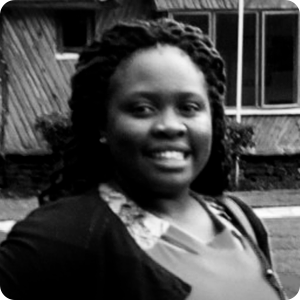
“The following strategies can be used to combat human trafficking: Awareness raising which focuses on the “P” of Prevention. There has been minimal or a lack of knowledge on how human trafficking occurs, on safe labor migration or child protection as well as the laws in place among the vulnerable categories of people. As much as it has been happening within communities, most of them don’t look at it as human trafficking. I would highly advocate continuous awareness raising. This can be done on different platforms depending on the targeted beneficiaries. To address climate change effects, I would recommend that community resilience is ensured. This will help to address to some extent the poverty and economic insecurity issues as well as other identified vulnerabilities. Partnership is also key in combating human trafficking. Multiple like-minded parties should join hands to respond to human trafficking based on their different capacities. The application of a survivor-centered approach is essential – nothing about them without them. Research is also a great component in the response to human trafficking. There has been a lack of data on human trafficking hence a lot of effort should be put into research to produce a clear picture of the different forms of human trafficking so that any kind of response is relevant and based on proof.”

“A human rights-based approach to addressing trafficking gives equal attention to prevention, protection and prosecution. This victim-centered approach requires collaboration between legislators, prosecutors, law enforcement, service providers and other victim advocates. It is the collective responsibility of the international community to halt the increase in human trafficking. I would like to recommend multiple activities that could help achieve this:
- Introduce training and awareness programs for vulnerable groups so they can be aware of the signs of human trafficking and to report suspicious cases, as well as learn how to spot the signs of sexual exploitation
- Continually monitor trafficking risks and provide a helpline to report trafficking
- Help survivors
- Ordinary people can also help by sharing a missing person(s) poster, sharing up-to-date education on trafficking prevention, reading a book on trafficking prevention, participating in the Wear Blue Day for Human Trafficking Awareness Day on January 11, reporting a trafficking tip-off to the legal authorities, sharing trafficking tip-off lines and hotlines, attending a webinar focused on human trafficking prevention, volunteering to assist in missing person cases, donating directly to a trafficking prevention NGO/CSO.”
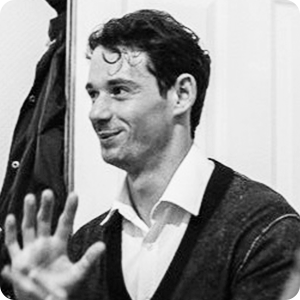
“Trafficking for labor and sexual exploitation is inextricably linked to our immigration policies, the societal view of sex work and corporate practices. If we really want to address transnational human trafficking then we must address the failures of our refugee asylum and immigration systems and provide clear and achievable pathways for vulnerable people to be able to live and work safely, while also looking honestly at the evidence around sex work to move away from solely a criminal law approach and look at the issue holistically. We must remove the legal enclaves that allow for legal trafficking. The ruling in the UK (Basfar (Respondent v Wong (Appellant) [[2022] UKSC 20]) was a good start, removing the shroud of protection that meant sovereign immunity could be used to facilitate slavery, but there is far more to do. Corporations must play their part in ensuring their supply chains are free from slavery and, in doing so, we must move beyond audit compliance and look at how our systems of labor create vulnerabilities and then purposely create production systems that support both workers’ well-being and the bottom line.”

“To prevent human trafficking, the international community needs to not only strengthen the quality of cooperation among agencies and states, but also create more accessible migration routes. Moreover, international actors can put more emphasis on funding direct and social protection services in developing or at-risk countries to target the root causes of human trafficking. When it comes to responses to global crimes, the willingness of one country or organisation is not enough. A united response can be a more direct approach to tackle the complexity of how organised crime groups operate.”
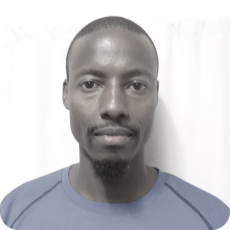
“The international community can stop the increase in human trafficking in Africa by, among other things:
- Proactive and constant sensitization of persons at the grassroots perhaps through the use of popular social activities such as football and music on what human trafficking is and the forms it takes including an online presence where the luring of victims is fast gaining speed.
- Proactive and constant training and retraining of the personnel involved in the fight against human trafficking such as police officers, migration officers and aid workers.
- Exchange programs among the stakeholders involved in the fight against human trafficking so as to share ideas on best practices (such as between law enforcement agencies) to curb the vice.
- Careful screening of aid and humanitarian players as well as employment agencies to weed out unscrupulous organizations that covertly abet human trafficking by providing victims to abusers.
- Aggressive illiteracy and poverty eradication programs such as self-help initiatives, the building of technical schools and fundraising to support needy children’s school fees.
- Promote partnerships geared towards combating human trafficking among stakeholders such as LEAs (police, immigration) across countries
- Develop a global standard operating procedure in dealing with cases of human trafficking.
- Sharing of information on notorious traffickers for potential identification by victims, e.g., through Interpol.
- Sharing of the technology that is essential to fight the vice including intelligence gathering tools.
- Introducing and sharing whistle-blowing platforms to enable anonymous reporting of gender-based violence.
- Aggressive protection of the environment to reduce greenhouse effects which have greatly caused detrimental climate change causing disturbances in populations including migrations that make people vulnerable to human trafficking.
- Interventions to save the climate and agricultural value of farm lands that support livelihoods and prevent migrations that would hitherto be exploited by human traffickers.
- Lobbying for the full implementation of laws that protect people from the causes of unbearable economic times (such as political upheavals as well as pandemics like COVID-19) that leave people vulnerable to trafficking as they migrate in search of stability.
- Develop stringent migration laws both locally and internationally that safeguard migrants from potential abuse by having in place mechanisms to screen and place migrants. This ensures safe migration pathways.
- Push for the manning and normalization of porous borders, e.g., Kenya-Ethiopia, Kenya-Somalia, Kenya-Tanzania, Kenya-Uganda, Kenya-Sudan borders so as to create safe pathways for migrants.”

“I received some requests for help from women in the war zone. I wanted to help, but they wanted me to send money to private bank accounts. It sounded like a possible scam. I could not be sure without having someone organizing the safe migration in the area. The international community and civil society should be organized by having reliable people in the field that could get in touch with the women at risk. This is a major challenge because at present all women living in war zones are at high risk of suffering violence, abuse or human trafficking. Establishing safe migration routes is urgent and more resources should be allocated for this purpose. I think that an international working conference should be organized in order for NGOs, international organizations and civil society to share resources and ideas to develop a plan that can organize safe migration routes and safe arrival sites for women on the run.”
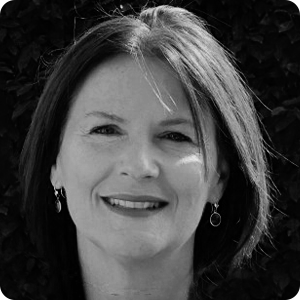
“Human trafficking and modern slavery disproportionately impact diverse groups including those experiencing long-term or temporary homelessness, marginalization and social exclusion, poverty, discrimination, and violence. By understanding the complex and unique risks, drivers, and experiences of trafficking facing women and girls (along with vulnerable groups such as migrants or displaced people, persons with disabilities, LGBTQI people and children), the international community will be able to design and deliver comprehensive efforts to end trafficking. Improved understanding will require strengthening organizational safeguards and policies related to the prevention of sexual exploitation and abuse (PSEA) and child protection, empirical research and data analysis with at-risk groups and survivors of trafficking in core, continuous capacity building of staff working in the field, along with support for government and NGO partners across sectors on key trends and strategies for preventing trafficking in persons and an increased investment in transformative programs grounded in a human rights-based approach.”
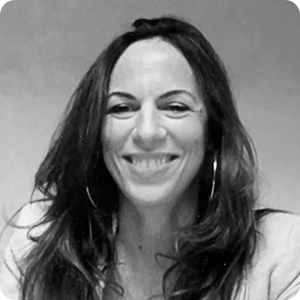
“Human trafficking thrives in a global context marked by the convergence of capitalist and patriarchal systems. In it, multiple pressure factors converge that lead the potential victims of trafficking to the decision to migrate driven by promises of life situations that are better than their original. They are generally traversed by different axes of cumulative discrimination that merge at some point, placing them in situations of vulnerability. These axes are poverty and marginality, migration and gender. The percentages of the population living below the poverty line are constantly increasing, much more so with the consequences of the pandemic and multiple armed conflicts. Added to the foregoing is the vision that the rest of society has of the poorest groups of the population, crossed by representations of this sector that places them within the limits of legality due to their conditions of poverty or economic precariousness. The key could then be in working for development on a human scale, to strengthen local economies so that the lack of infrastructure is no longer a factor of pressure, to put together real plans for the shelter of refugees so that the camps are of real reception and strengthening of capacities. And of course, strongly investigate the trafficking networks and follow the money routes to catch the organizations that are really behind the crime and not merely those who carry out the visible tasks of this complex crime.”
See also: The impact of the COVID-19 pandemic on modern slavery and child labor | Experts’ Opinions
Check out more than 60 job opportunities in the human rights, conflict, and migration sectors here.

